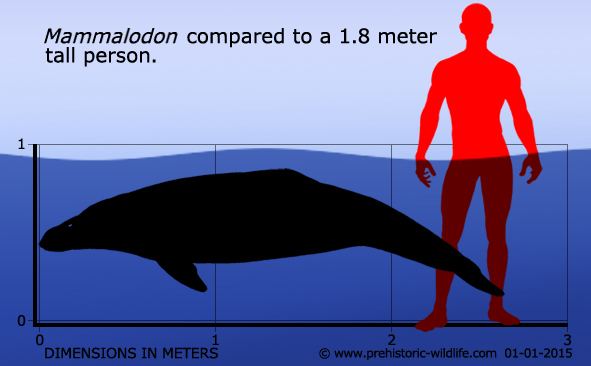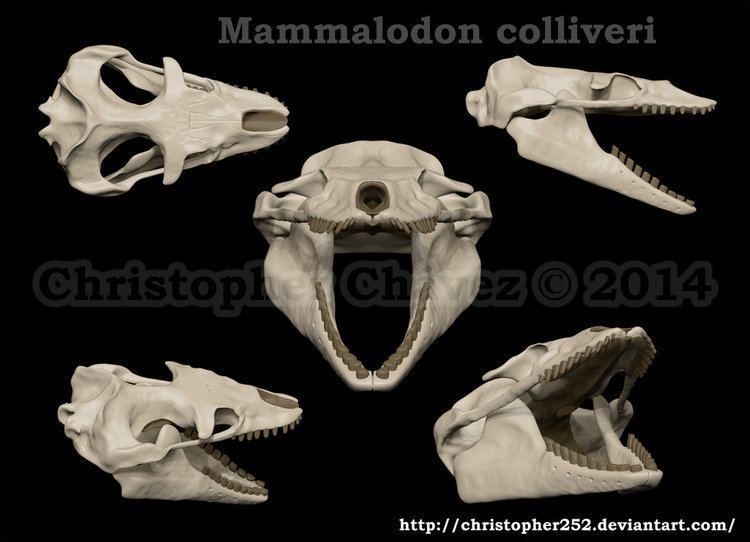Scientific name Mammalodon colliveri Rank Genus | Family †Mammalodontidae Phylum Chordata Order Even-toed ungulate | |
 | ||
Similar | ||
Mammalodon is an extinct genus of archaic baleen whale belonging to the family Mammalodontidae.
Contents
Discovery
The type species, M. colliveri, was discovered in 1932 in the Jan Juc Formation on the small Bird Rock island south of the Point Lillias peninsula in Torquay, Victoria in Australia (38.3°S 144.3°E / -38.3; 144.3, paleocoordinates 52.9°S 142.2°E / -52.9; 142.2). The second species, M. hakataramea, was discovered in the Kokoamu Greensand of New Zealand.
Description
Mammalodon, with a length of 3 m (9.8 ft), was smaller and more basal than modern baleen whales.

Mammalodon is a mix of archaeocete plesiomorphies (retained primitive traits) and mysticete synapomorphies (traits shared with more derived taxa), such as a short rostrum, reduced premaxillae, and orbits directed anterodorsally — defining features of mysticete.

It had a short face and a delicate premaxilla with only one or two incisors, and the lateral rim of the internal auditory meatus was lengthened towards the brain case which formed a longitudinal ridge.
Palaeobiology
As with the closely related genus Janjucetus, Mammalodon lacked baleen, instead possessing well-developed teeth. As such, it was not able to filter-feed in the same manner as extant baleen whales, making its diet and ecological niche a mystery. As the teeth are widely spaced, they may have developed a method of filter-feeding unlike that of other whales. It may have been a bottom filter feeder, its blunt snout helping to suck up organisms from the sea floor.
